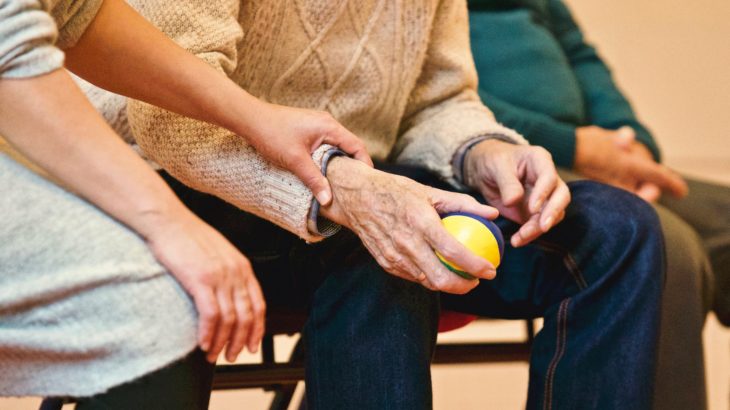Naltrexone for Addiction Treatment
Naltrexone is an opioid receptor antagonist that blocks the effects of opiate drugs and decreases alcohol cravings. For this reason, it is often integrated into substance abuse recovery.
It should not be relied upon as a “cure” for addiction, but rather as one aspect of a treatment plan that includes other therapeutic modalities such as counseling and 12-step support groups.
Understanding Addiction Treatment with Naltrexone
Naltrexone is a tablet that you can take at home, or have administered by medical staff at a treatment facility, to help you recover from alcoholism or an addiction to opiate drugs.
According to the Substance Abuse and Mental Health Services Association, “naltrexone blocks the euphoric and sedative effects of drugs such as heroin, morphine, and codeine. It works differently in the body than buprenorphine and methadone, which activate opioid receptors in the body that suppress cravings. Naltrexone binds and blocks opioid receptors, and is reported to reduce opioid cravings. There is no abuse and diversion potential with naltrexone.”
If you happen to relapse and take an opiate drug while on naltrexone, you will not experience the “reward” of getting high. This function also applies to alcohol use, preventing the euphoric aspects of being intoxicated. By removing the reward that comes from using, you greatly reduce the temptation to use, and greatly increase your chances of maintaining sobriety for the long-term.
How to Take Naltrexone
Naltrexone treatment should only start after you’ve finished detoxing from narcotics, as the medication can exacerbate or even cause withdrawal symptoms if you are still physically dependent on your drug of choice. For this reason, it is advised to wait 7 to 10 days after quitting drugs before commencing treatment with naltrexone.
Naltrexone comes in tablet form, to be taken by mouth once a day, once every other day, once every third day, or once every day except Sunday, depending upon the particular formulation that has been prescribed to you. Follow your doctor’s instructions carefully, and ask your doctor or pharmacist to explain anything that you don’t understand.
Take naltrexone exactly as directed. If you miss a dose, take it as soon as you remember. However, if it is almost time for your next dose, skip the missed dose and continue your regular dosing schedule. Do not take a double dose to make up for a missed one.
Possible Side Effects of Naltrexone
According to MedlinePlus, Naltrexone may cause side effects. Tell your doctor if any of these symptoms are severe or do not go away:
- nausea
- vomiting
- stomach pain or cramping
- diarrhea
- constipation
- loss of appetite
- headache
- dizziness
- anxiety
- nervousness
- irritability
- tearfulness
- difficulty falling or staying asleep
- increased or decreased energy
- drowsiness
- muscle or joint pain
- rash
Some side effects can be serious. If you experience any of these symptoms, call your doctor immediately:
- confusion
- hallucinations
- blurred vision
- severe vomiting and/or diarrhea
Who Might Benefit from Naltrexone Treatment?
The Mayo Clinic’s page on addiction explains that “for diagnosis of a substance use disorder, most mental health professionals use criteria in the Diagnostic and Statistical Manual of Mental Disorders (DSM-5), published by the American Psychiatric Association… DSM-5 criteria for substance use disorder include a behavior pattern of drug use that causes significant problems and distress, regardless of what drug is used.” This means that the following list applies to you even if your drug of choice is alcohol.
You may have a substance use disorder if at least two of these issues occur within a 12-month period:
- You often take larger amounts of the drug over a longer period of time than you intended
- You want to cut down or quit, but haven’t been successful
- You spend a good deal of time getting the drug, using the drug or recovering from the effects of the drug
- You have intense urges for the drug that block out any other thoughts
- You aren’t meeting obligations and responsibilities because of your substance use
- You keep using the drug, even though you know it’s causing problems in your life
- You give up or cut back important social, occupational or recreational activities because of your substance use
- You use the substance in situations that may be unsafe, such as when driving or operating machinery
- You use the substance even though you know it’s causing you physical or psychological harm
- You develop tolerance, which means that the drug has less and less effect on you and you need more of the drug to get the same effect
- You have physical or psychological withdrawal symptoms when you stop taking the drug, or you take the drug (or a similar drug) to avoid withdrawal symptoms
If two or more of these statement apply to your own experience, then your drinking or drug use is a cause for concern.
Treatment with Naltrexone
When taken as a part of a comprehensive addiction recovery plan, naltrexone can help you continue to abstain from drugs and alcohol while you undergo treatment. Although there are side effects, the medication’s benefits will usually outweigh the risks. Just make sure to pay attention to how you feel, and to consult your doctor if you experience anything unusual or troubling.
Drug and Alcohol Addiction Treatment
Substance abuse treatment will not always be easy, but choosing to seek help will be the best decision you ever made. Right now, your life likely revolves around drugs or alcohol. You may feel as if your world has shrunk down to a small prison cell that leaves no room for dreams, goals, hope, or even a clear sense of who you are and what you want.
Breaking free from addiction also means breaking out of these limitations and allowing your world to expand. Imagine how wonderful it would be to feel hope for the future, to set goals and know that you have the strength and resources to achieve them.
Detoxification
Before you can start taking naltrexone, and begin to benefit from therapeutic interventions, you will need to completely detoxify your system from drugs and alcohol. Taking naltrexone while addictive substances are still affecting you physically will result in unpleasant side effects and intensified withdrawal symptoms.
After a complete detox, usually 7 to 10 days after quitting your drug of choice, you will be able to start using naltrexone as a part of your recovery. The medication will reduce your cravings, and if you happen to relapse, you will be able to get back on track more quickly, because naltrexone will prevent you from feeling the euphoria of drug and/or alcohol intoxication, thereby removing the reward of substance abuse.
Talk Therapy
No matter whether you choose a residential program that provides a constant environment of recovery, or an outpatient program that you can incorporate into your daily life, counseling will be an essential component of your treatment.
Individual therapy offers an intensive, one on one method of addressing mental health issues and past trauma. Your therapist may also use cognitive behavioral therapy (CBT) to teach you how to free yourself from negative patterns of thinking and behavior, showing you how to replace them with healthier ways of dealing with stress, conflict, cravings and trigger situations.
Group therapy with other people in the same treatment program can be a great way to remind yourself that you aren’t alone in the challenges you face. Some people in the group may be further along in treatment and can help you by offering advice, or by simply providing an example of the growth that is achievable in therapy. Offering support to others can also be incredibly therapeutic, boosting your morale and creating a comforting sense of community.
Family and couples therapy is especially useful for relapse prevention. There may be wounds that drug use inflicted upon your relationships that need to be healed. You may have interpersonal problems that need to be resolved. By working through these problems, and learning how to more effectively communicate with each other, you and your loved ones will be able to create a home environment that is much more conducive to your continued progress.
Holistic Therapies
Most treatment programs today believe that recovery plans should use approaches that heal the body, mind and spirit as a whole. Some of these holistic therapies are more traditional, such as art and music therapy, or fitness interventions where you learn to improve your brain chemistry through healthy exercise. Some of these therapies may be more “alternative,” such as acupuncture, drum circles, meditation, and equine therapy.



